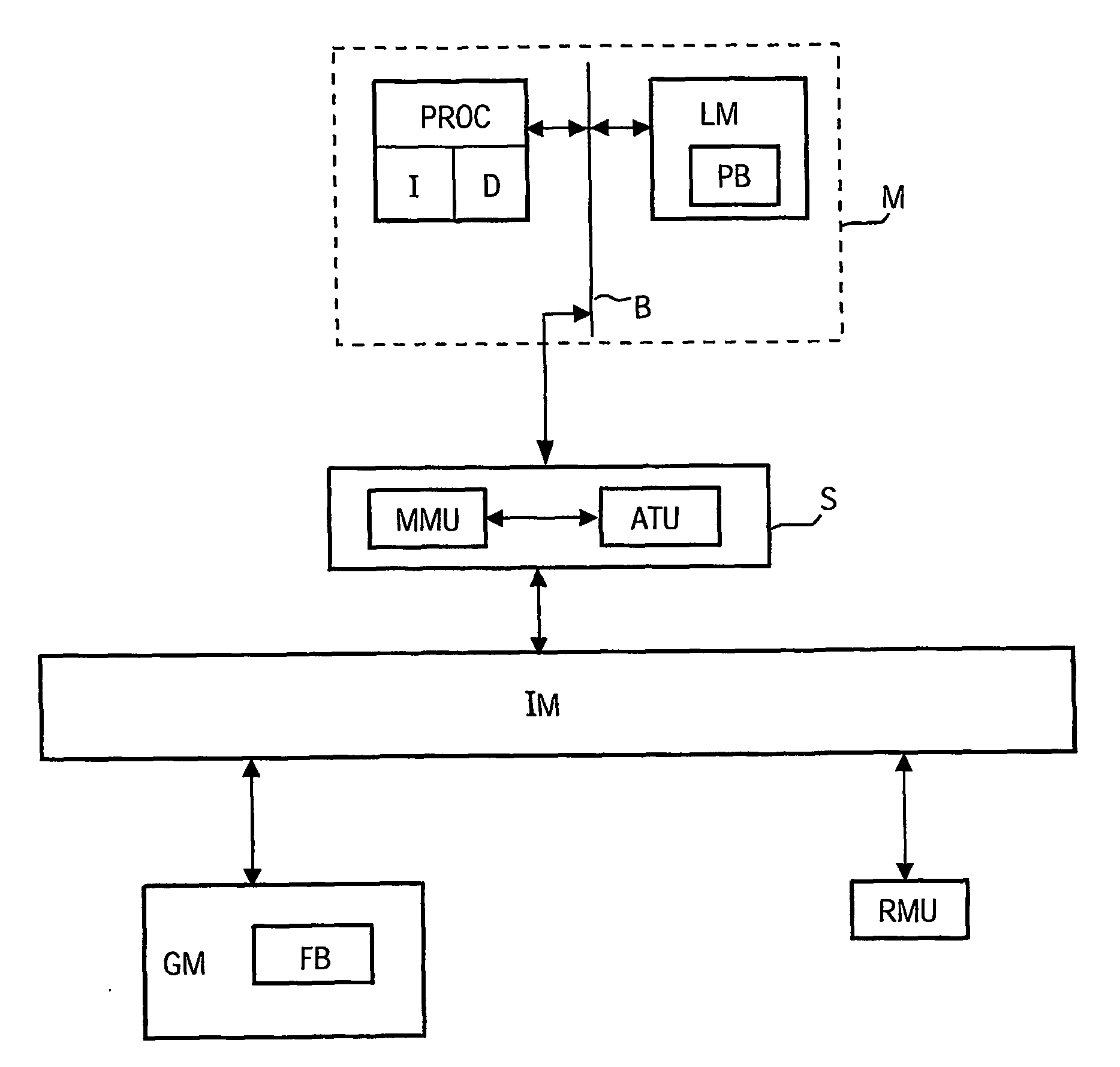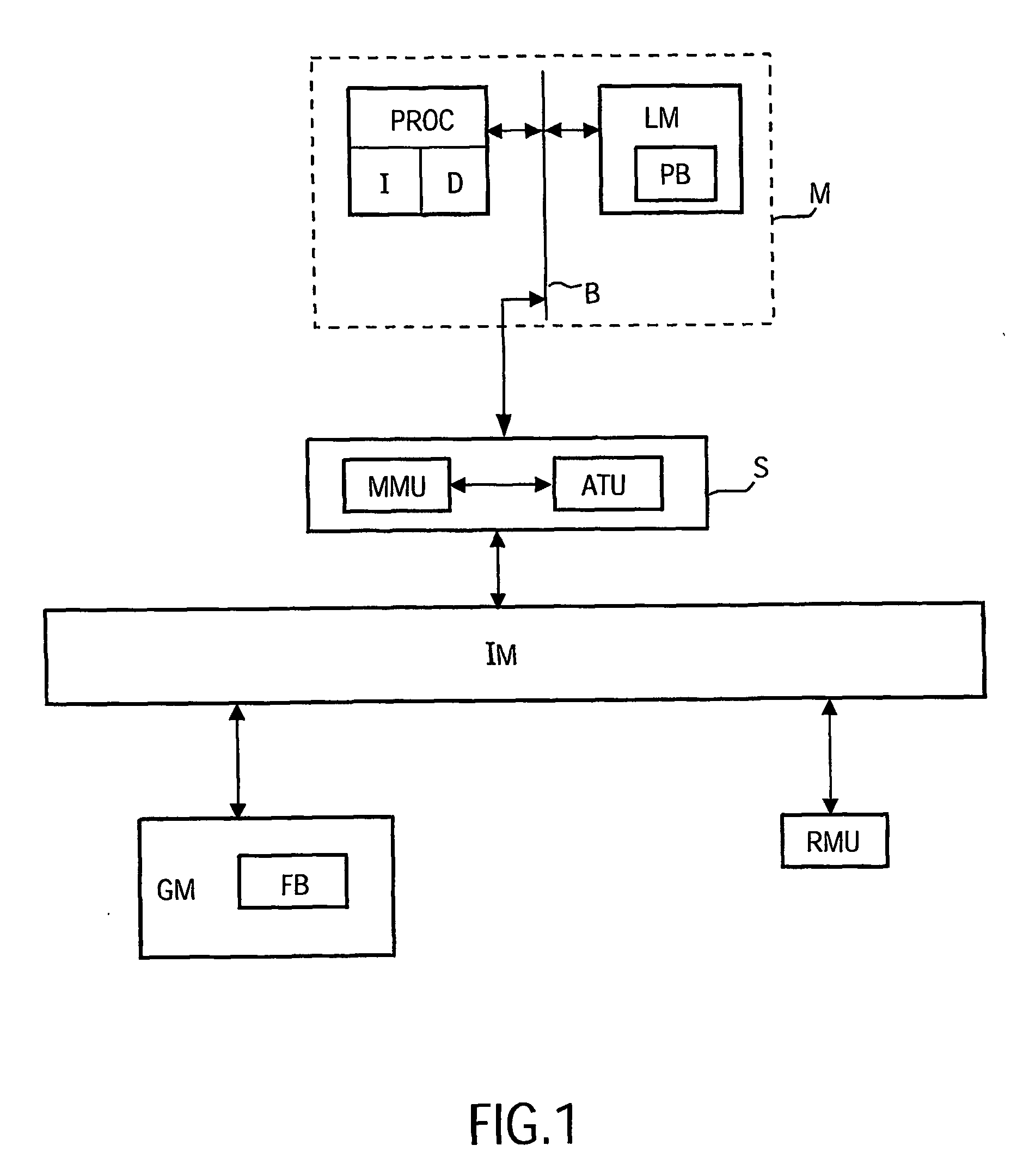Integrated circuit with dynamic memory allocation
- Summary
- Abstract
- Description
- Claims
- Application Information
AI Technical Summary
Benefits of technology
Problems solved by technology
Method used
Image
Examples
first embodiment
[0023]FIG. 1 shows a block diagram of a system or chip according to a The system comprises a module M, a shell S, an interconnect means IM, a global memory GM and a resource managing unit RMU. The module M is connected to the global memory GM via the shell S and the interconnect means IM. The module M comprises a processor PROC, an instruction cache I, a data cache D, and a local memory LM. The processor PROC and the local memory LM are connected to each other via a bus B. The local memory LM comprises a prefetch buffer PB. The local memory LM is used as a private memory exclusively for the module M. The local memory LM is dimensioned as a small memory which is enough to run applications with low memory demands. The amount of this memory space may depend on the application performed on the module M.
[0024] The module M may be any subsystem and may further comprise other functional blocks, performing dedicated applications or several different applications. Although the modules M hav...
second embodiment
[0032] According to the invention, the module M from FIG. 1 may be an UMTS modem, which requires memory to perform a de-interleaving function. The amount of required memory for this function will depend on the data rate, the interleaving span (the amount of ms interleaving) and the coding rate of the error correction. If the memory is dimensioned for the maximum data rate and the maximum span, a memory of 2 Mbits is required. Usually, such a large amount of data have to be located in the global memory GM. On the other hand, if a low-demanding case at low data rate and minimum interleaving span is considered, merely 50kbits are required. This amount of memory space can easily be stored in the local memory LM, therefore, this will lead to a power advantage, since no data needs to be outsourced. Thus, reducing the power needed by a mobile phone is always preferable, since this is a prime competing factor (“talk-time”) of a mobile phone.
PUM
 Login to View More
Login to View More Abstract
Description
Claims
Application Information
 Login to View More
Login to View More - R&D
- Intellectual Property
- Life Sciences
- Materials
- Tech Scout
- Unparalleled Data Quality
- Higher Quality Content
- 60% Fewer Hallucinations
Browse by: Latest US Patents, China's latest patents, Technical Efficacy Thesaurus, Application Domain, Technology Topic, Popular Technical Reports.
© 2025 PatSnap. All rights reserved.Legal|Privacy policy|Modern Slavery Act Transparency Statement|Sitemap|About US| Contact US: help@patsnap.com


